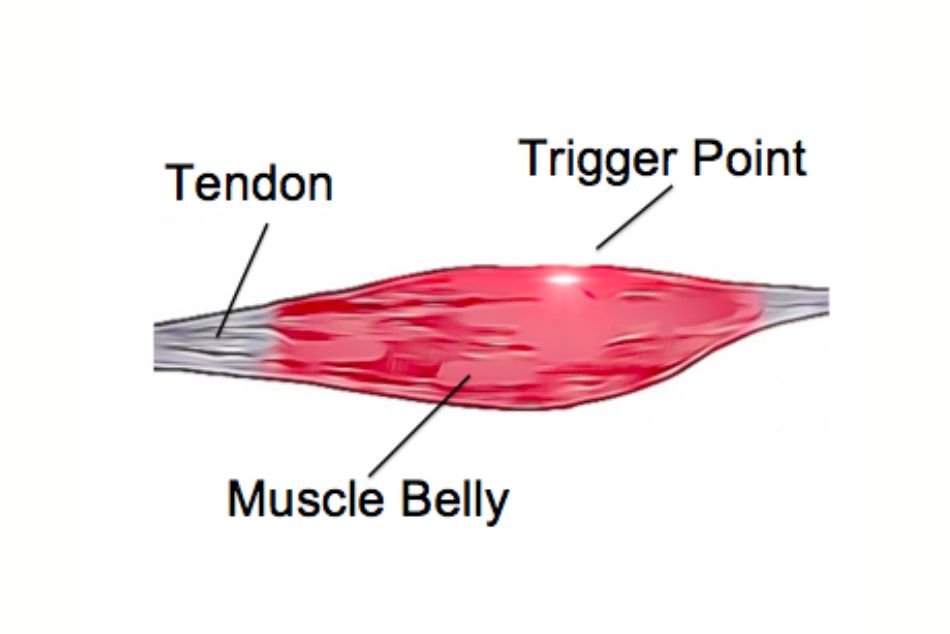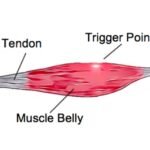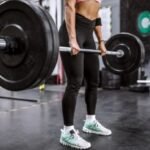What Are Muscle Bellies? Understanding This Crucial Part of Muscle Anatomy
When it comes to building a well-shaped and strong physique, most people focus on lifting heavy weights or increasing reps. But there’s a less-discussed term that can influence your aesthetics, performance, and muscle function—muscle bellies. So, what are muscle bellies, and why should you care?
In simple terms, a muscle belly is the thick, fleshy part of a muscle—the part that contracts and does the actual work during movement. Unlike tendons, which attach muscles to bones, muscle bellies are where the strength, size, and shape originate. Whether you’re a competitive bodybuilder, a casual gym-goer, or someone recovering from injury, understanding muscle bellies can elevate your approach to training.
This article dives deep into muscle belly anatomy, function, variations, real-life muscle examples, training insights, and even injury prevention tips—crafted especially for athletes and lifters who want real results.

Anatomy of the Muscle Belly: The Core of Muscle Structure
Definition and Location
A muscle belly is the central, contractile part of a skeletal muscle, located between its origin and insertion points. This part is packed with muscle fibers (myocytes), fascicles, connective tissues, and blood vessels. When you flex your biceps or feel the burn during squats, you’re engaging your muscle bellies.
The belly is what gives a muscle its size and shape. The surrounding tendons—composed mostly of collagen—connect the muscle belly to bones and allow the generated force to move the skeleton.
Composition
Each muscle belly is made up of smaller structural units:
- Myocytes (muscle cells): The functional cells responsible for contraction.
- Fascicles: Bundles of muscle fibers.
- Sarcomeres: The smallest contractile units inside muscle fibers.
- Epimysium: A tough connective tissue sheath that wraps the entire muscle belly.
The presence of blood vessels and nerves ensures the muscle belly receives nutrients and signals required for movement and repair.
Tendons vs Muscle Bellies
It’s crucial to differentiate tendons from muscle bellies:
| Aspect | Tendons | Muscle Bellies |
|---|---|---|
| Muscle Bellies | Connect muscle to bone | Generate force and create movement |
| Structure | Dense, fibrous connective tissue | Fleshy, contractile tissue made of muscle fibers |
| Contractile Ability | Non-contractile | Contractile – responsible for movement |
| Location | Found at the ends of muscles (origin/insertion) | Located between the origin and insertion points of a muscle |
| Injury Risk | More prone to wear-and-tear or inflammation (e.g., tendinitis) | More prone to strains, tears, and contusions |
| Healing Time | Slower due to limited blood supply | Faster due to richer vascular supply |
| Training Impact | Not directly hypertrophied by training | Can be enlarged through hypertrophy-focused training |
| Visual Contribution | Minimal – does not contribute to muscle size or shape | Major contributor to visible muscle size, shape, and aesthetics |
Functional Significance of Muscle Bellies
Contractile Role
Muscle bellies are the engines of movement. They generate force through the sliding filament mechanism—sarcomeres shorten when actin and myosin filaments interact, resulting in contraction. This contraction pulls on tendons, leading to movement at the joint.
Whether you’re sprinting, squatting, jumping, or even holding a yoga pose, the muscle belly is doing the bulk of the mechanical work.
Structural Importance
Apart from contracting, the belly provides volume and density to muscles. It stores glycogen and contains mitochondria, making it a metabolic powerhouse. The epimysium and surrounding connective tissues also play a key role in distributing force and protecting against strain.
In strength sports and bodybuilding, the size and density of the muscle belly contribute directly to both performance and aesthetics.
Variations in Muscle Belly Anatomy
Long vs Short Muscle Bellies
One of the most talked-about aspects of muscle bellies in the bodybuilding world is their length. Long and full muscle bellies are generally associated with a rounder, fuller look and greater potential for growth.
Long Muscle Bellies
- More potential for hypertrophy
- Visually more “complete” appearance
- Better leverage in some movements
Short Muscle Bellies
- Often leaves a visible gap between the muscle and joint (like a high bicep peak)
- May offer better mechanical advantage in explosive or isolated actions
- Can appear less developed even if strong
This variation is mostly genetic and cannot be altered through training. However, you can enhance the appearance and functionality of your given muscle belly type.
Muscle Shapes and Architecture
Muscles come in different architectures that affect the shape and performance of the belly:
- Fusiform (e.g., biceps brachii): Long, spindle-shaped
- Unipennate (e.g., extensor digitorum longus)
- Bipennate (e.g., rectus femoris)
- Multipennate (e.g., deltoid)
Each shape has unique implications for strength, endurance, and range of motion. For example, pennate muscles tend to produce more force due to their fiber arrangement.
Bilateral Symmetry and Asymmetry
Some individuals may notice that their left and right muscle bellies differ in shape or size. This asymmetry is often genetic, but can also result from poor training form, injury, or neurological imbalance. It’s important to train both sides equally and incorporate unilateral exercises to address these imbalances.
Muscle Bellies in Specific Muscles
Rectus Abdominis
Often referred to as the “six-pack” muscle, the rectus abdominis is a long, strap-like muscle with tendinous intersections that divide it into multiple bellies. These intersections give the abdominal muscles their chiseled appearance.
Interestingly, the number of visible bellies can vary between individuals. Some people have an 8-pack, others 6 or 4, depending on genetics.
Gastrocnemius (Calf Muscle)
The name itself means “belly of the leg.” This muscle has two distinct bellies—medial and lateral—which merge into the Achilles tendon. The shape and fullness of these bellies can drastically change the appearance of your lower leg.
Training techniques like standing calf raises or donkey calf raises specifically target these muscle bellies to improve size and symmetry.
Biceps Brachii
The biceps consist of two heads, and their belly shapes influence arm appearance. A longer biceps belly creates a more complete look, whereas a short belly may lead to a more peaked appearance. Variations like the “Popeye” shape are due to the belly’s length and attachment points.
Training and Performance Implications
Hypertrophy and Belly Size
Training cannot change the insertion or origin of a muscle, but it can increase the thickness and volume of the muscle belly through hypertrophy. Exercises that emphasize time under tension, full range of motion, and progressive overload are key.
Recommended approaches:
- Compound lifts (e.g., squats, presses, pulls) for overall mass
- Isolation movements (e.g., curls, lateral raises) for targeting specific bellies
- High-volume training for sarcoplasmic hypertrophy
Strength and Mechanics
The length and shape of a muscle belly can affect the mechanics of a lift:
- Long bellies: Better endurance and force production across a range
- Short bellies: Explosive strength and tighter joint control
Tailoring your training to your anatomical structure can help you maximize your performance without overtraining or injury.
Mind-Muscle Connection
A strong mind-muscle connection is crucial when training for hypertrophy. By focusing mentally on the muscle belly being worked, you can increase activation, particularly in isolation movements. Techniques like tempo training, partials, and isometrics can enhance engagement.
Common Injuries and Prevention
Muscle Belly Injuries
Injuries to the muscle belly typically occur due to:
- Sudden overload (e.g., sprinting without warm-up)
- Overtraining without adequate recovery
- Poor biomechanics
Common muscle belly injuries include:
- Strains: Micro-tears in muscle fibers
- Contusions: Bruising from direct trauma
- Tears: More serious and often require medical attention
Prevention Tips
- Always warm up properly
- Use correct form and technique
- Include mobility and flexibility drills
- Prioritize recovery (sleep, nutrition, hydration)
- Incorporate deload weeks to avoid overuse
Understanding where the muscle belly sits and how it functions helps prevent common gym-related injuries and supports long-term progress.
Conclusion: Mastering the Muscle Belly for Better Gains
So, what are muscle bellies, and why should you pay attention to them? In short, they’re the working powerhouse of your muscles—the part responsible for movement, aesthetics, and strength. Whether your muscle bellies are long or short, symmetrical or uneven, they define how your muscles perform and appear.
By understanding their anatomy, functional role, and how they respond to training, you can design smarter workouts, prevent injuries, and unlock your full muscular potential. Remember: you can’t change your genetics, but you can absolutely train your muscle bellies to perform and look their best.
Frequently Asked Questions (FAQs)
Q1) What Is a Muscle Belly?
It’s the thick, contractile part of a skeletal muscle located between its tendons. It’s responsible for generating force and movement.
Q2) How Is a Muscle Belly Different From a Tendon?
Muscle bellies contract to create movement, while tendons are non-contractile and serve to attach muscle to bone.
Q3) Why Does Everyone’s Muscle Belly Look Different?
Genetics plays a huge role. Some people have longer, fuller muscle bellies, while others have shorter ones. Training can improve size but not structure.
Q4) Can Training Change the Length of Your Muscle Belly?
No, the origin and insertion points are genetically fixed. You can only increase the size and density of the belly through hypertrophy.
Q5) What Exercises Target Muscle Bellies?
Nearly all resistance exercises engage muscle bellies. Isolation movements like curls, lateral raises, and tricep extensions help focus on specific muscle bellies.
Q6) Can Surgery Alter Muscle Bellies?
Cosmetic procedures exist, but they are rare and come with significant risks. It’s always better to improve the appearance of the muscle belly through training.
Q7) How Does Age Affect Muscle Bellies?
With age, sarcopenia can cause a reduction in muscle belly size and function. Strength training and protein intake are essential to maintain muscle mass as you age.







